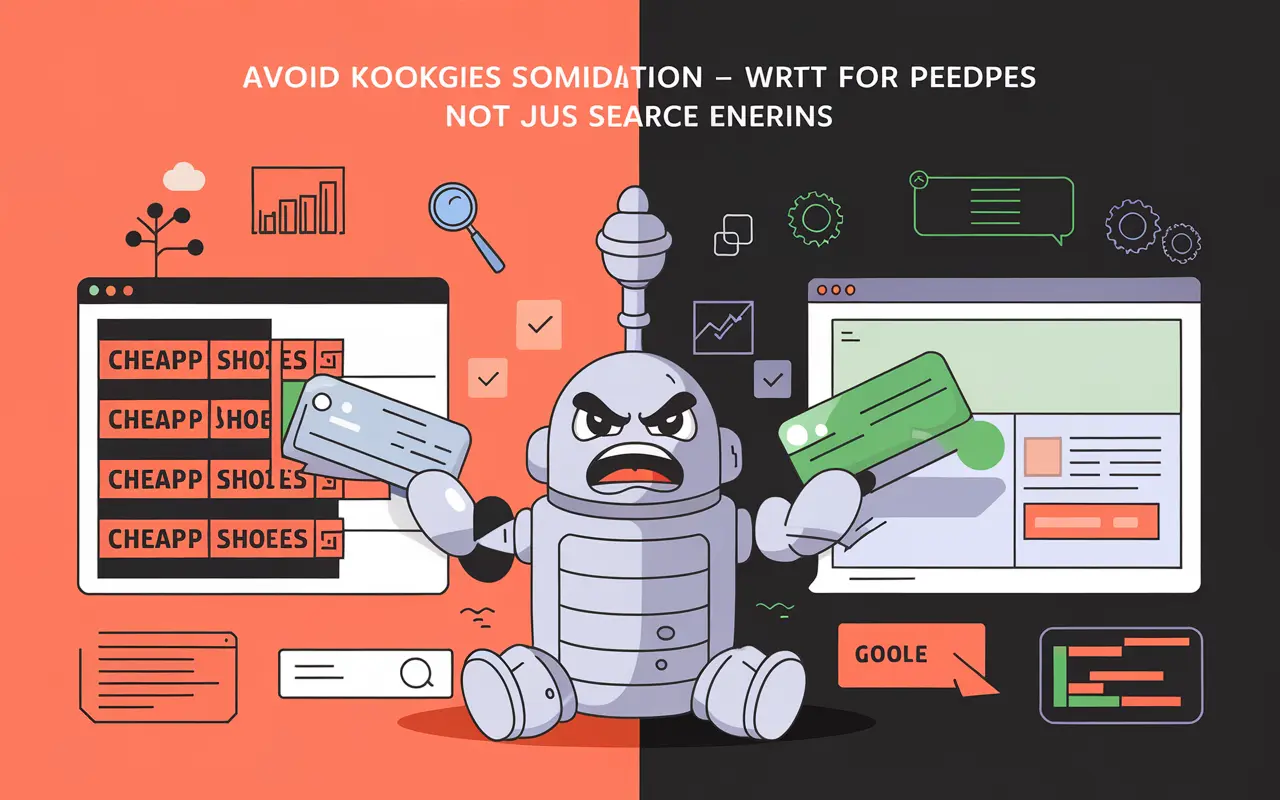Understanding Keyword Stuffing and Why It Matters for SEO
Keyword stuffing is an outdated and harmful SEO practice where a web page is overloaded with keywords or numbers in an attempt to manipulate its ranking on Google. This includes repeating the same words or phrases so often that it sounds unnatural and forceful. It’s considered a black-hat tactic and violates Google’s content guidelines.
In today’s SEO landscape, content relevance, quality, and user experience are prioritized over keyword density. Websites that still engage in keyword stuffing risk ranking penalties or complete removal from search engine indexes.
Recognizing and avoiding keyword stuffing is critical in developing a successful SEO strategy that focuses on organic growth and user satisfaction.
Key Takeaway
Keyword stuffing is the unethical practice of overusing keywords to manipulate search rankings, resulting in poor user experience and search engine penalties. Avoid it by focusing on content quality and natural keyword integration.
Why Keyword Stuffing Can Destroy Your SEO Efforts
Search engines like Google have evolved to detect manipulative tactics. Keyword stuffing can be detrimental to your SEO performance for several reasons:
- Lower Rankings: Google’s algorithms penalize pages with unnatural keyword repetition.
- Poor User Experience: Overloaded content leads to readability issues and high bounce rates.
- Lost Credibility: Users quickly lose trust in content that seems forced or spammy.
- Possible Deindexing: In extreme cases, websites can be removed from the Google index.
Best Practices to Avoid Keyword Stuffing in Your SEO Strategy
Follow these industry-approved best practices to ensure your content remains optimized while maintaining readability and authority:
- Write for Humans First: Prioritize user experience and natural language over cramming keywords.
- Use Synonyms and Related Terms: Integrate contextually relevant terms to avoid repetition and improve semantic relevance.
- Keep an Eye on Keyword Density: Maintain a keyword density of 1-2%—anything higher could seem unnatural.
- Use Tools for Optimization: Tools like Surfer SEO or Yoast SEO help ensure optimal keyword usage without overdoing it.
- Leverage Latent Semantic Indexing (LSI) Terms: These improve contextual relevance and help Google better understand your content.
How Keyword Stuffing Works — And Why It Fails
Keyword stuffing works by placing an excessive number of keywords on a page in hopes of signaling to search engines that the content is highly relevant. However, modern algorithms like Google’s BERT and Helpful Content Update are designed to reward informative, well-written content, not keyword overuse.
Examples of Keyword Stuffing:
| Bad Example | Better Alternative |
|---|---|
| If you want free shoes, our free shoes are the best free shoes online for people who want free shoes. | Looking for affordable footwear? Check out our best-selling free shoes perfect for any budget. |
| Buy iPhones. iPhones are great. iPhones are cheap. iPhones are fast. | Discover why our customers love our affordable, fast, and high-performing iPhones. |
Case Study: How One E-Commerce Website Recovered from Keyword Stuffing
Problem: Severe Keyword Overuse on Product Pages
An online electronics retailer stuffed target keywords like “cheap laptops” and “discount laptops” into every line of product descriptions across their site. Their traffic dropped by 50% within a month following a core Google algorithm update.
Solution: Content Audit and Semantic Optimization
The SEO team conducted a full content audit, removed excessive keywords, and rewrote descriptions with natural language. They used LSI keywords and improved the UX to make product pages more valuable and informative.
Results: 80% Increase in Organic Traffic Within 4 Months
By eliminating keyword stuffing and optimizing for relevance and readability, the site saw major improvements. Organic traffic increased by 80%, bounce rate fell by 25%, and revenue grew by 30%.
Top Mistakes to Avoid When Optimizing for Keywords
To build SEO-friendly webpages, steer clear of the following common pitfalls:
- Using Exact-Match Keywords Excessively: This makes your content seem robotic and outdated.
- Stuffing Keywords in Meta Tags: Keyword abuse in meta titles and meta descriptions isn’t effective and could be penalized.
- Over-Optimizing Anchor Text: Repeated use of exact-match text in your links triggers red flags to search engines.
- Hiding Keywords: Making text the same color as the background to hide keywords is considered deceptive and will get penalized.
Related SEO Terms to Understand
- On-Page SEO: Practices such as optimizing meta tags, headers, and content for better search visibility.
- SEO Audit: Evaluation of a website to identify existing SEO issues, including keyword stuffing.
- Semantic SEO: Improves content relevance by incorporating meaning and context over keyword repetition.
FAQs About Keyword Stuffing
Keyword stuffing in SEO is the practice of overusing keywords in a webpage’s content to gain higher rankings on search engines. It’s considered a black-hat tactic and penalized by Google.
No, keyword stuffing is not effective and can harm your website. Modern search engines prioritize content quality, relevance, and user experience.
If your content repeats the same phrases excessively and feels unnatural to read, it might be keyword-stuffed. Use SEO analysis tools to verify density and natural flow.
The ideal keyword density is generally around 1-2%. Focus on natural inclusion and readability rather than strict metrics.
Conclusion: Embrace Modern SEO—Ditch the Keyword Stuffing
Keyword stuffing is not only ineffective in today’s SEO landscape, it’s a serious risk to your site’s visibility and reputation. Instead, focus on creating high-quality, user-focused content that incorporates keywords naturally. By avoiding these outdated tactics, your website can maintain a strong, authoritative presence in search results.
Want to learn more about building an SEO-friendly website? Visit our SEO services page and start optimizing the right way.






